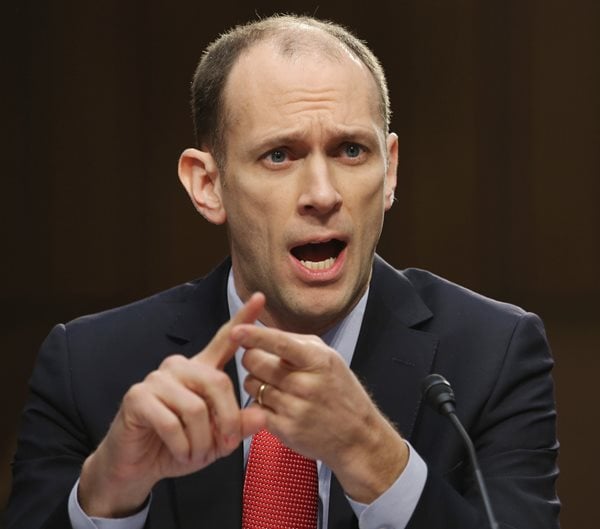[ad_1]
The biggest impediment to the Federal Reserve returning inflation to its 2% target rate is the persistence of outsized price increases in the housing services sector, Chicago Federal Reserve Bank President Austan Goolsbee said Thursday.
“The biggest danger to the inflation picture in my view… (is) the continued high inflation in housing services,” Goolsbee said in prepared remarks to an event hosted by local business associations in Oak Brook, Illinois.
He added that based on market data on rents for new leases, “I have been expecting it to come down more quickly than it has. If it does not come down, we will have a very difficult time getting overall inflation back to the 2% target.”
The Fed is currently awaiting more economic indicators as it mulls when to begin cutting its benchmark interest rate, which has been held in the 5.25% to 5.50% range since July in order to help bring inflation back to the central bank’s goal.
Inflation, by the Fed’s preferred measure, remains half a percentage point or more above that target rate, and recent progress has been minimal, causing jitters among policymakers as they seek more evidence that inflation will fully come down.
Most policymakers, including Goolsbee, are still expecting at least three rate cuts this year as the Fed tries to balance the risks of reducing interest rates before inflation is truly tamed with the risks of restraining economic activity more than is needed.
However, on Wednesday, Atlanta Fed President Raphael Bostic said he now anticipates just one cut this year, with it coming in the fourth quarter.
Goolsbee has so far declined to say when he thinks a reduction in borrowing costs would likely begin.
Elsewhere in his remarks, Goolsbee said that disappointing inflation readings for January and February shouldn’t be written off as “purely noise” but added that it did not necessarily mean the Fed was not still on a good path, as long as housing inflation began to soften.
“Housing inflation remains my most valuable indicator for the immediate future,” Goolsbee said. He also cautioned against the central bank waiting too long to begin its cutting cycle.
“If we stay restrictive for too long, we will likely see the employment side of the mandate begin to deteriorate,” Goolsbee noted.
The central bank has key data, including the March payrolls report on Friday, and inflation measures next week ahead of its next policy meeting on April 30-May 1. Investors currently expect a first rate cut to come in June.
© 2024 Thomson/Reuters. All rights reserved.
